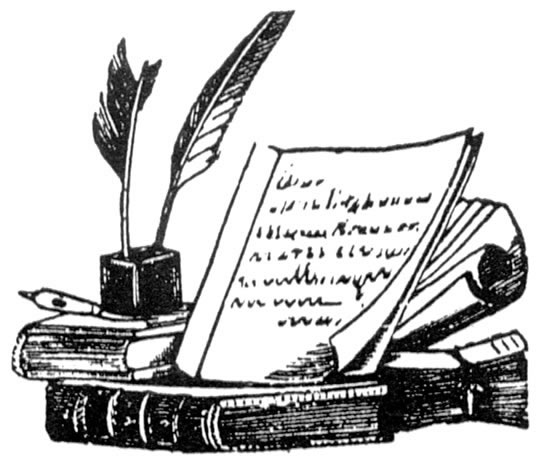VIVID DESCRIPTION
SPRINKLE IT IN LIKE SALT
Contemporary readers are impatient with large chunks of description. Interlace your description with the action, dialogue and inner thoughts of the characters.
Do this subtly, don’t force sensory description into unnatural or glaring purposes, and steer away from the quagmire of excessive trivia. Sometimes a single detail in a story is enough to bring it to life for the reader and keep the story alive in memory.
SETTINGS
Catharine and Heathcliff in Wuthering Heights are inseparable from the wild British moors. And Scarlet and Rhett couldn’t exist without the backdrop of the old South. The rich textures of their surroundings are unforgettable. Stephen King draws on description as a mood setter (fading light, dusk, wind, flat land, emptiness) in which we are being set up to feel the inner life of the character even before we meet him.
If you want your setting to seem that real to the reader, it must first be real to you. You must be able to see it, touch it, smell it, before you can expect the reader to become immersed in the world of your story. If possible visit the settings you plan to use. Take photographs and pin them up where you write.
CHARACTERS
Characters are usually brought to life by their actions and dialogue, but a good description can help the reader form an instant impression of their physical looks or personality.
From “A Rose for Emily”: Her eyes, lost in the fatty ridges of her face, looked like two small pieces of coal pressed into a lump of dough.
From “A Christmas Carol”: Oh! But he was a tight-fisted hand to the grindstone, Scrooge! A squeezing, wrenching, grasping, scraping, clutching, covetous old sinner! Hard and sharp as flint, from which no steel had ever struck out generous fire; secret, and self-contained and solitary as an oyster. He carried his own low temperature always about with him; he iced his office in the dog-days; and didn’t thaw it one degree at Christmas.
PLOT WITH YOUR FIVE SENSES
Make description do double duty whenever you can by focusing on details that affect the plot. Look at the setting through the character’s eyes, and combine description with action, show your character interacting with his surroundings.
Keep in mind: What does my character see, hear, smell, feel, taste? When the reader’s sensory nerves are triggered, the story will come to vivid life on the page and be a better story than you ever dreamed possible.
Don’t just describe sound, smell, etc in the abstract. The description should always be perceived by the character in the story or be in terms of his reaction to his world. It’s the difference between The spring air smelled of roses and Jane breathed in the scent of roses on the spring air.
Your character can suffer a growling stomach at the aroma of coffee and bacon, flinch from a power tool’s blinding sparks, taste his own blood in a fist fight, hear the cymbals clang, the factory whistle blow. Hit the character’s (and the reader’s) senses with the earthy freshness of rain, the ozone tang of lightning on the air, the shot of booze to an alcoholic, a whiff in the elevator of a scrubbed, powdered, perfumed Park Avenue matron. Does your character have a dry, cotton mouth? An aftertaste of mint? Lipstick? Medicine? Garlic? Is her first impression a scent of dust, recent rain, horses, a sweaty man, baking bread, furniture polish?
Onomatapoeia is a word that mimics a sound. Buzz is the sound of a bee, lightning goes zap, the clock goes tick tock. The very sound of the word suggests its meaning. Common occurrences of this poetic or rhetorical device are found in animal noises, such as hiss, oink, meow, whinny, roar, and woof. Boom, pow, or whack, crash, and thwack give us the sensory impression of a sudden impact. We can truly hear the clackety clack of train wheels on the track.
The key is not to use just any sensory detail, but to let your imagination find the right detail for that moment of the story’s reality. Of the five senses, you need use only one or two at a time. Slip in information in small doses. Throw your readers too much description, and their interest will begin wandering from the story.
USE PRECISE TERMS
Broad words like tree, house, car, dog, rocks or bushes can be brought to vivid life by selecting more precise or specific nouns. What kind of house? What kind of tree?
The little house was surrounded by trees is vague compared to a cabin hidden by pines, farmhouse flanked by a stand of apple trees, winery nestled among twisted olives or Italian cypress, or a Creole cottage shaded by moss-draped live oak. When you use precise nouns instead of generic ones, the reader instantly visualizes from his own experience what that little house in the trees looks like.
Likewise, saying that the dog ran off into the bushes doesn’t offer a very clear picture compared to the collie scampered through the sagebrush, or the pit bull dodged behind the lilacs, or a bloodhound trotted through the creek-side willows.
METAPHORS, SIMILIES & ANALOGIES
Use metaphor and simile to pack more imagery into fewer words.
A simile is short and direct and usually introduced by “as” or “like”. Hope is like yeast, rising under warmth.
A metaphor is just a figure of speech applied to suggest a resemblance: A mighty fortress is our God.
An analogy describes the comparison without actually naming it. In “The Last Report”, Erdich uses an analogy of fire to anger which leaves the reader feeling scorched: When this happened, they fought. Stinging flames of words blistered their tongues. Silence was worse. Beneath its slow-burning weight their black looks singed. After a few days, their minds shriveled into dead coals. Some speechless nights, they lay together like logs turned completely to ash.
Read Full Post »
